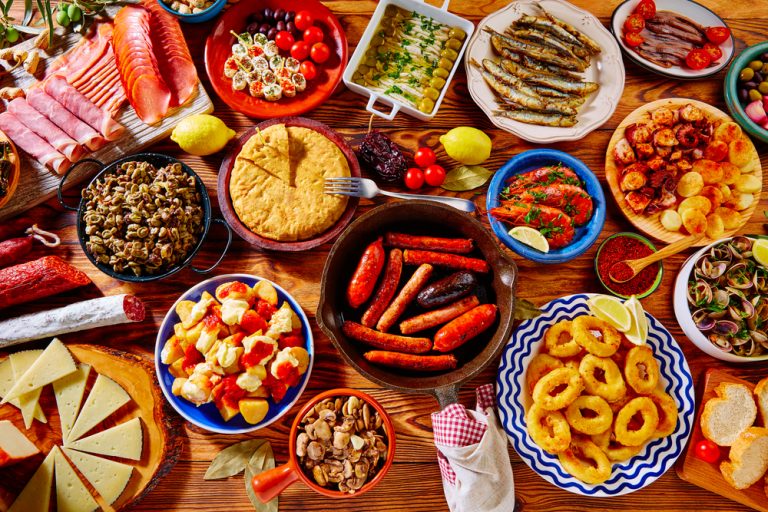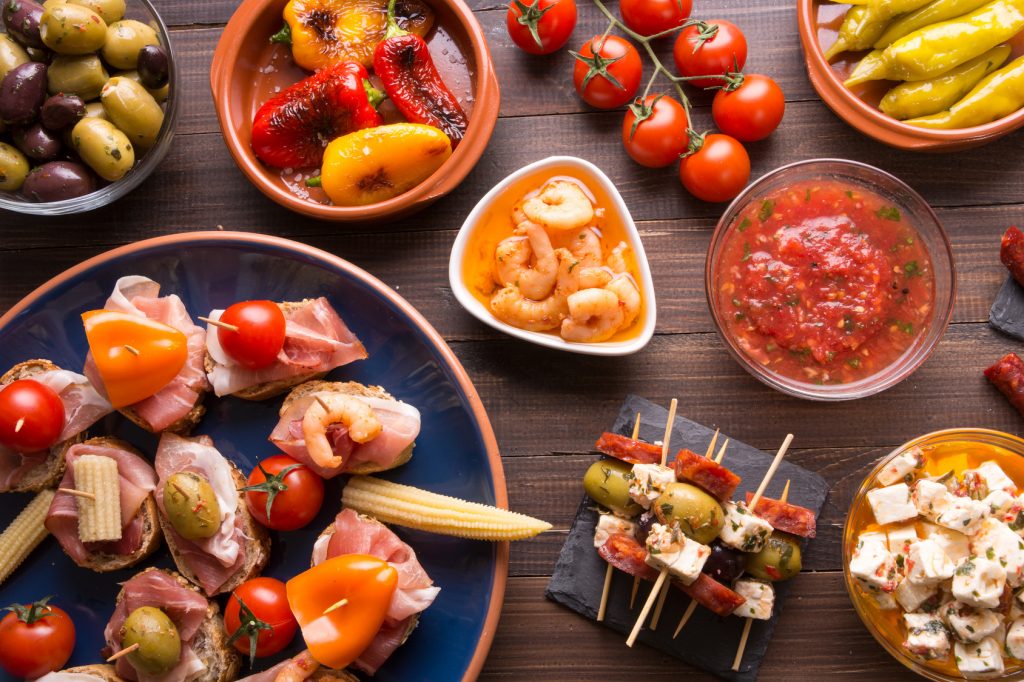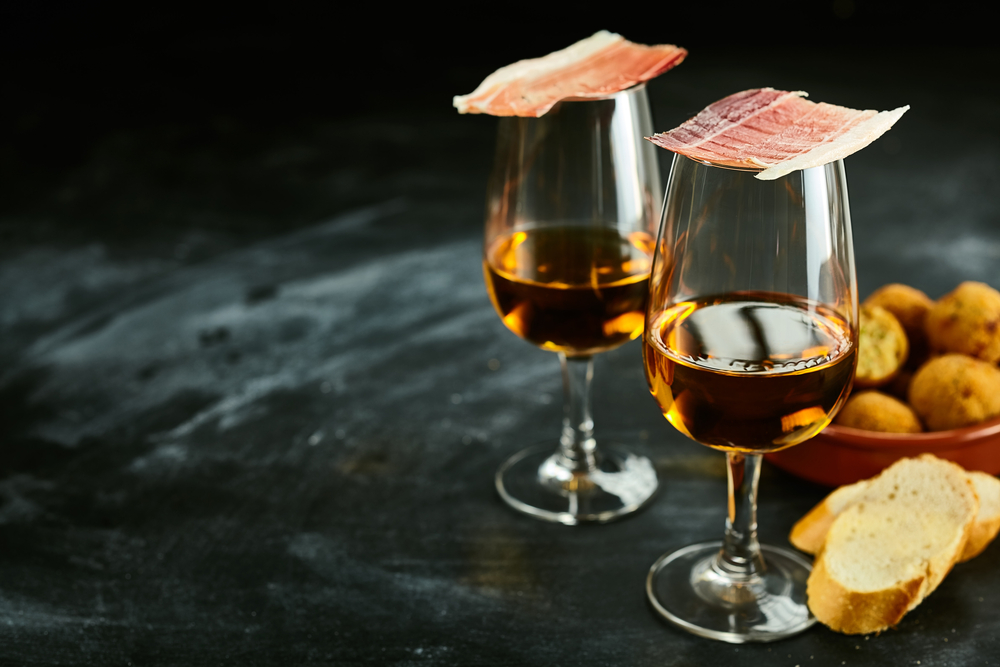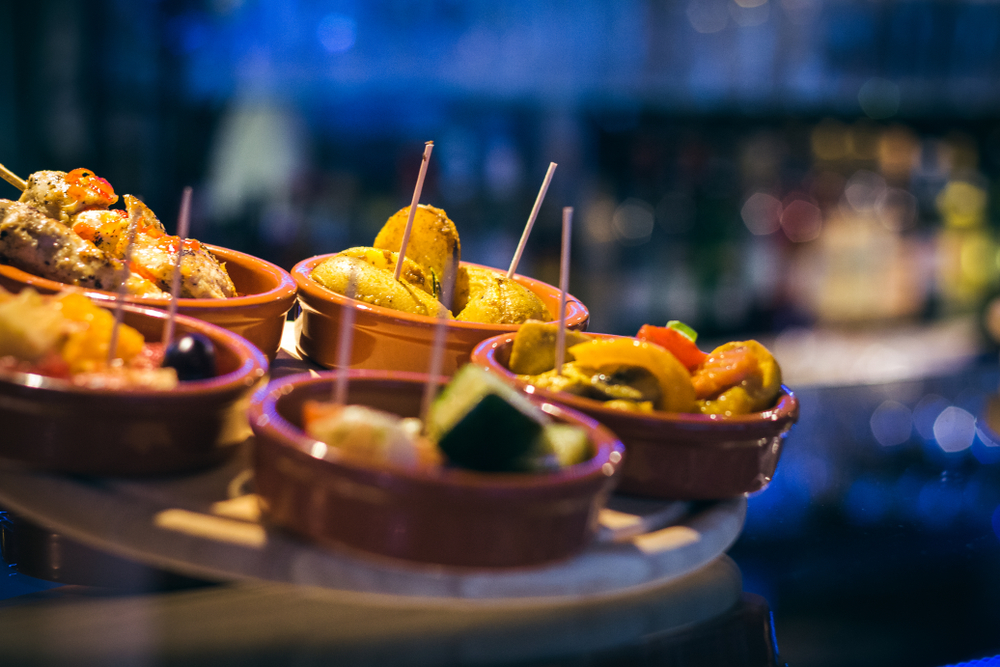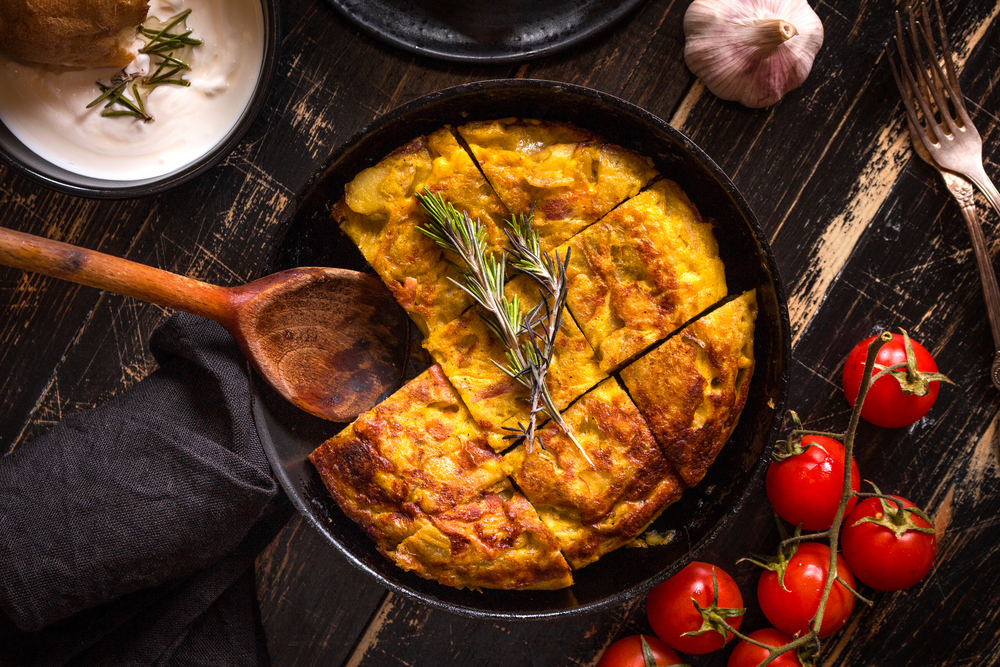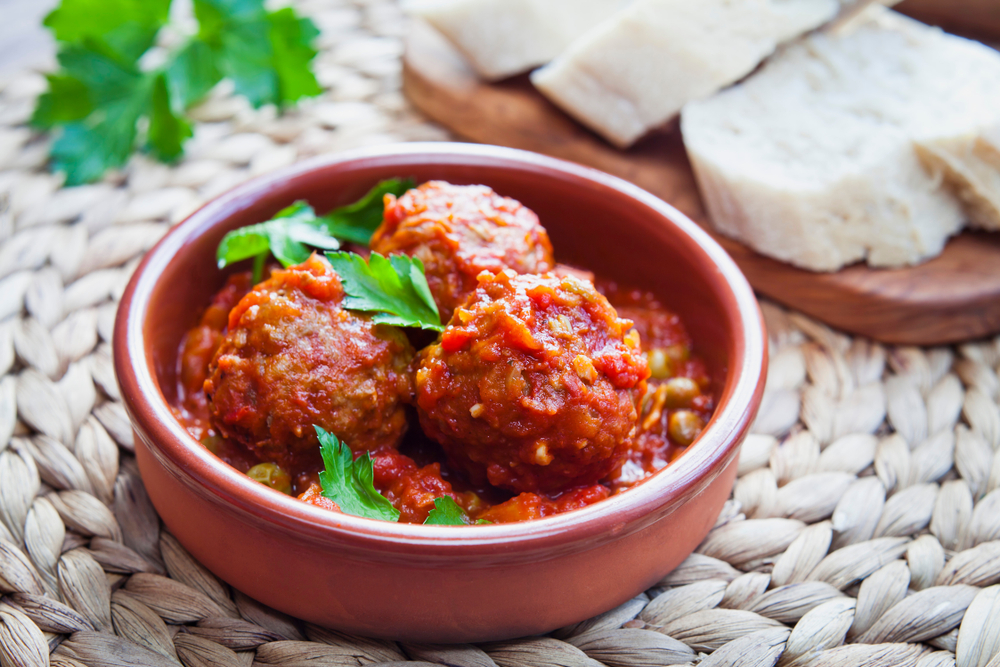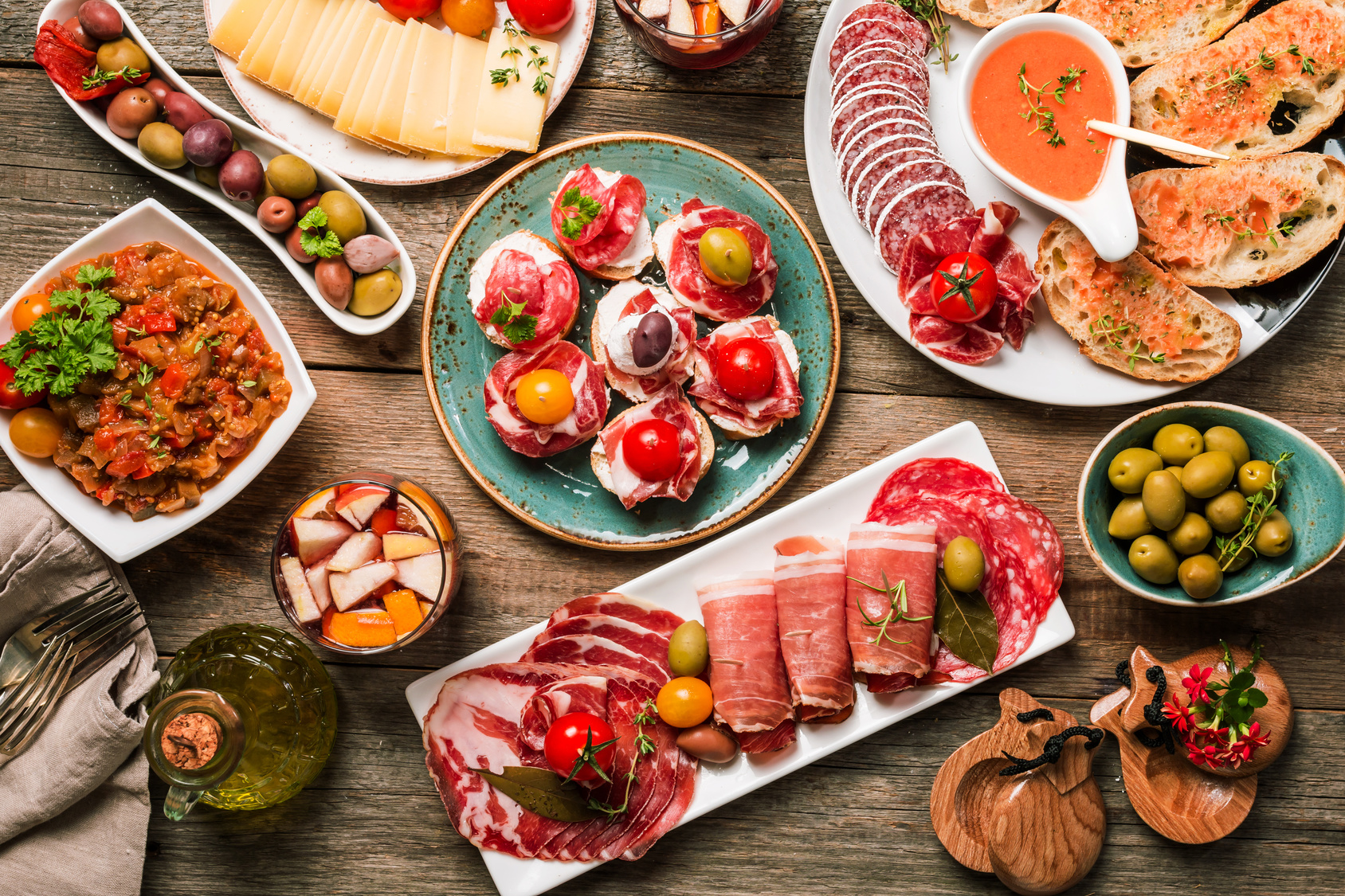While it seems like we might be slowly easing our way out of the lockdown we have all been experiencing over the last few months, travel abroad may still be a little way off. Luckily, by getting creative in the kitchen you can bring the traditional tastes of some of the world’s most popular tourist destinations to your home – and sample some foreign flavours to get you in the mood.
Tapas are a great place to start your travel cooking adventure because they are one of Spain’s most iconic culinary customs and are so easy to make at home.
The History of Tapas
What exactly people consider to be a tapa varies significantly from region to region. However, one thing is clear: size matters. A tapa should be a small (but delicious) portion of food, and should normally be served alongside a beverage of some description.
Tapas were traditionally eaten in bars before dinner as an appetiser, but nowadays many Spaniards consume a large selection of these bite-size treats as a meal, which they call a tapear.
How Were Tapas Invented?
Each region of Spain has its own claim to the invention of tapas. Some local stories refer to grand Medieval figures, others to royalty, and some anecdotes simply speak of commoners with good initiative.
One of the most famous explanations is that King Alfonso XIII stopped off during one of his trips to Cadiz at Ventorrillo del Chato. There, he ordered a glass of sherry. The winds were high that day, and the waiter was concerned that sand would be blown up from the beach and into the royal glass. To stop this from happening, he decided to cover the glass with a slice of ham. The King was apparently amused, and ordered more glasses with ham for his entourage.
Indeed, the name tapa comes from the verb taper (to cover) and other stories have a similar theme. For example, it’s also said that bartenders would cover customers’ glasses with a small slice of bread, cheese and ham to stop dust and flies getting into their drinks.
The Types of Tapas
Of course, a tapa is more than just a slice of ham covering your drink. Here are some of the most popular modern dishes for you to try:
- Jamón Iberico, a type of cured ham produced in Spain.
- Tortilla de patatas, a kind of Spanish omelette with potatoes.
- Patatas bravas, fried potatoes in a spicy sauce.
How to Go Out for Tapas
When the Spanish go out for tapas, they don’t tend to just visit one restaurant. Instead, they venture out on an ir de tapas, hopping from bar to bar and digging into a good variety of these small plates. Each bar, cafe or restaurant has its own specialty, so over the course of a long night out they get to taste all kinds of deliciousness in the different locations.
Certain places in Spain are well-known for giving out free tapas to people buying drinks:
- Granada
- Jaén
- Almería
The idea behind it is that the salt in the appetisers makes customers more likely to purchase more drinks from the bar.
Tortilla Recipe
I would suggest that the best place to start for your first tapa is with the popular tortilla—a kind of omelette cooked with potatoes. The recipe below serves six people.
Steps:
- Slice half an onion. Then, peel and dice 3 medium potatoes.
- Heat 4 cups of virgin olive oil in a deep pan or deep-fryer on a low-medium heat.
- Add the potatoes and poach them for 5 to 10 minutes. You don’t want the potatoes to form a crust or hard skin (you’re not really frying them) and they should really be soft in the end. Use a slotted spoon to turn them over as they poach.
- When soft, drain them from the oil and set aside.
- Then, beat 5 eggs in a large mixing bowl. Add salt to taste.
- Add the cooked potatoes to the bowl and mix with the eggs. Leave to stand for 10 minutes so the potatoes absorb some of the egg.
- Brush a heavy-bottom non-stick frying pan with olive oil and heat it on medium-low.
- Add the mixture to the pan and cook for a minimum of 5 minutes. You can use a spatula around the edges to check that the tortilla is not sticking.
- Place a large plate on top of the pan. Hold the bottom of the plate in one hand, and use your other hand to turn the pan upside down. The part-cooked tortilla will fall onto the plate. You can then place the flipped tortilla back into the pan and cook for another 5 minutes.
- Take off the heat and slide onto a plate. For an authentic experience, cut the tortilla into small squares before serving.
Other easy to make at home options include:
- Albondigas. These are little meatballs which you cook and then simply marinate in a pan with chopped tomatoes, olive oil, salt, pepper, and garlic.
- Pintxos. Cut a fresh baguette into slices and top with your favourite combination: sardines and peppers, tomato and jamón ham, meatballs, and olives are all good options. Use a toothpick to attach the toppings for the most authentic experience.
- Patatas bravas. Chop potatoes into wedges, boil them until mostly cooked, and then coat in olive oil and bake in the oven until golden. In the meantime, fry some onion, and add tomato sauce, garlic, chilli powder, sugar, paprika and salt. Simmer for ten minutes, and serve with the potatoes.
So, has that made your mouth water for a trip to Spain?
How to Get There
It’s incredibly easy to fly from the UK to Spain. The three main options for UK travellers are to fly to Madrid, to travel to Malaga, or to go from the UK to Barcelona.
When travel is back on the horizon, I would recommend booking an airport transfer with Shuttle Direct as soon as you’ve booked your flight. They have an excellent service, comfortable cars, and always make the job of getting to your accommodation stress-free.
About Shuttle Direct
Shuttle Direct is proud to be one of the world’s most respected providers of airport transfer services. We have a team of friendly local drivers operating across the globe, and offer both shared and private transfer options. So, no matter where you’re travelling and how big or small your budget, we can get you where you need to go in comfort and style.


